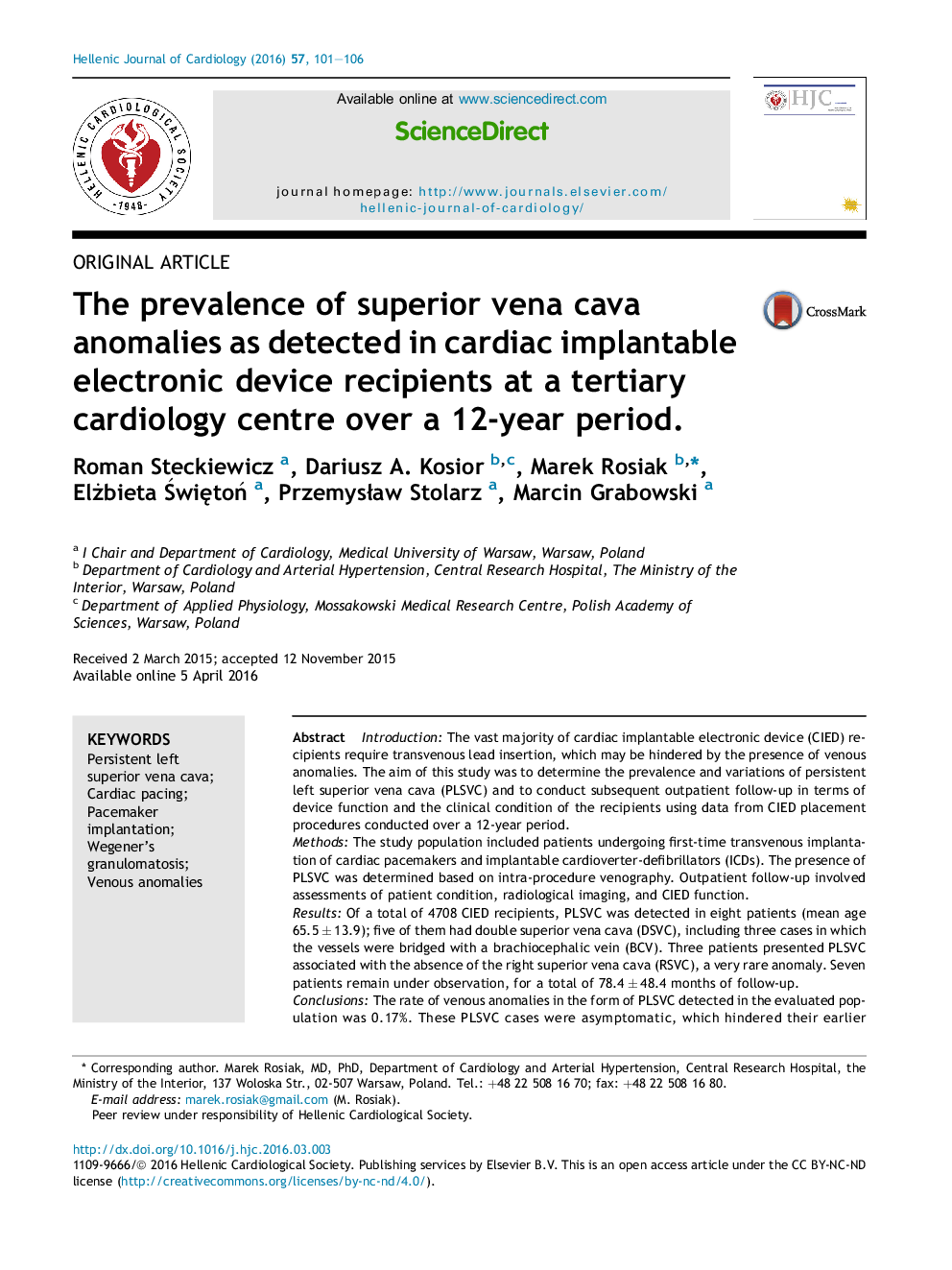| Article ID | Journal | Published Year | Pages | File Type |
|---|---|---|---|---|
| 2925972 | Hellenic Journal of Cardiology | 2016 | 6 Pages |
IntroductionThe vast majority of cardiac implantable electronic device (CIED) recipients require transvenous lead insertion, which may be hindered by the presence of venous anomalies. The aim of this study was to determine the prevalence and variations of persistent left superior vena cava (PLSVC) and to conduct subsequent outpatient follow-up in terms of device function and the clinical condition of the recipients using data from CIED placement procedures conducted over a 12-year period.MethodsThe study population included patients undergoing first-time transvenous implantation of cardiac pacemakers and implantable cardioverter-defibrillators (ICDs). The presence of PLSVC was determined based on intra-procedure venography. Outpatient follow-up involved assessments of patient condition, radiological imaging, and CIED function.ResultsOf a total of 4708 CIED recipients, PLSVC was detected in eight patients (mean age 65.5 ± 13.9); five of them had double superior vena cava (DSVC), including three cases in which the vessels were bridged with a brachiocephalic vein (BCV). Three patients presented PLSVC associated with the absence of the right superior vena cava (RSVC), a very rare anomaly. Seven patients remain under observation, for a total of 78.4 ± 48.4 months of follow-up.ConclusionsThe rate of venous anomalies in the form of PLSVC detected in the evaluated population was 0.17%. These PLSVC cases were asymptomatic, which hindered their earlier detection. The presence of these anomalies made the procedures more challenging for the operator and increased the perioperative complication rates; however, neither patient condition nor CIED function was affected based on the long-term outpatient follow-up.
